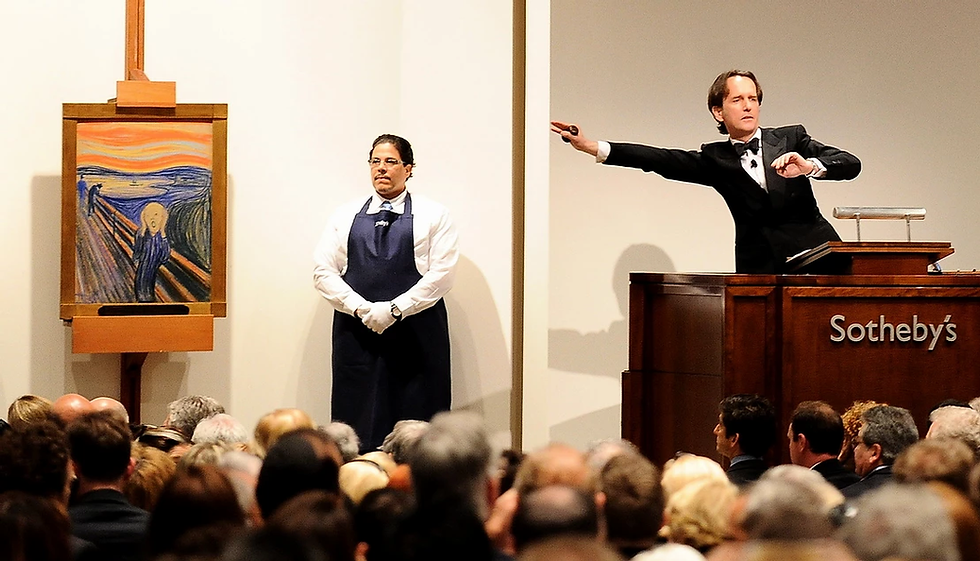Dutch Auctions
- Karmanya GB

- May 3, 2021
- 3 min read

When one hears the word "auction" usually the above image springs to mind. An overly animated auctioneer continuously shouting out the current price nudging the attendees to bid on an item whose price keeps going up until the biggest bidder wins and the auctioneer slams his mallet ending the auction.

Well dutch auctions are the same thing but the exact opposite. Confused? hear me out.
In a normal auction the item on sale has a certain minimum price and the price of the item keeps increasing with every bid, this is called an ascending price auction.
A dutch auction on the other hand looks more like the adjacent image. In a dutch auction instead of the price increasing from a minimum to a value where only one bidder can buy the item, it decreases from a certain maximum to a certain minimum which is acceptable to the seller so that nobody is paying more than they wanted to.
To get a better understanding of this, let's go through the process of selling 1,000 candies through this process. A seller would come to the auctioneer and tell him what is the minimum price he is willing to sell his candies at (say 10₹ a piece). The auctioneer will now offer the candies at a much higher price, let's say for 100₹ a piece. Now the participants of the auction can place their bids. They will mention the number of pieces they want to buy and at what cost. After the bidding is over the least price per piece above the seller's hard cap (of 10₹) will be the selling price for the candies. But who gets the candies? Once the price is set the candies are sold in the order of highest bidder first till all the candies are sold. That's it, this is what dutch auction is.
The United States Department of the Treasury, through the Federal Reserve Bank of New York (FRBNY), raises funds for the U.S. Government using a Dutch auction. The FRBNY interacts with primary dealers, including large banks and broker-dealers who submit bids on behalf of themselves and their clients using the Trading Room Automated Processing System (TRAPS), and are generally told of winning bids within fifteen minutes.
For example, suppose the sponsor of the issuance seeks to raise $10 billion in ten-year notes with a 5.125% coupon and in aggregate the bids are as follows:
$1.00 billion at 5.115% (highest bid)
$2.50 billion at 5.120%
$3.50 billion at 5.125%
$4.50 billion at 5.130%
$3.75 billion at 5.135%
$2.75 billion at 5.140%
$1.50 billion at 5.145% (lowest bid)
In this example the % at high is 66.66%, meaning only $3 billion of the $4.5 billion at 5.130% get bonds. Bids are filled from the lowest yield (highest price) until the process raises the entire $10 billion. This auction clears at a yield of 5.130%, and all bidders pay the same amount. In theory, this feature of the Dutch auction leads to more aggressive bidding, as those who (in this example) bid 5.115% receive the bonds at the higher yield (lower price) of 5.130%
In a sense Dutch auction is more democratic as the price of the item is decided by the buyers and due to its process it is equitable and inclusive. The disadvantages of this process are the fact that the seller finds it hard to set a hard cap and that if this method was employed in the financial market of today the financial institutions would not be able to play the market the way they do today




Wonderful read.